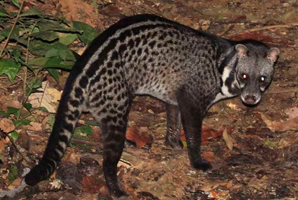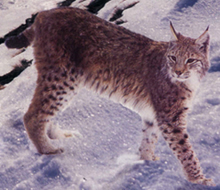 Above all perceptions in the natural world, is the tuning of the senses to a language far more resounding than words. Yet so subtle, that it remains inaudible to our own human acoustics.
Above all perceptions in the natural world, is the tuning of the senses to a language far more resounding than words. Yet so subtle, that it remains inaudible to our own human acoustics.
As you or I might walk through the forests, and delight in the songs of the oriole, or the warning drill of a flamboyant peacock, we remain entirely unsuspecting of the deeper meanings of this hidden forest language.
 In the undergrowth, a transmission of thoughts, a communication of triumphs and fears are exchanged continuously, between these other forms of awareness.
In the undergrowth, a transmission of thoughts, a communication of triumphs and fears are exchanged continuously, between these other forms of awareness.
We are able to hear the excitable splash of a rock upon the surface of a stream. But we could never fathom its numerous, submerged meetings with other drowned pebbles, before it finally lays to rest beneath the currents.
There is a clear division between perception at the surface, and an insight of what lies beneath it all.
But there is a language that crosses this boundary. And once in a while, you may hear its voices, in the open, scrub-land forests of Sri Lanka - as you listen to the songs of the songs of the elephant.
Before we even see them, before we can hear the drumming approach of their footsteps, their voices reach us first. Penetrating our inner thoughts and awakening instinctive, buried memories of our lost communion with the wild.
On the plains of Udawalawe National Park, the resident herds and migrating nomads converge and unite, as the rains begin to fall. This is a time for reawakening family ties. Their strong. tactile bonds are intimately revealed by the delicate embrace of trunk within trunk, and head upon head. So simple to rationalise and interpret in terms of human affection, but there is more to this. Listen, and you will hear them speak. Not with words, with music.

Elephants most often communicate in deep, rumbling notes. These songs seem to have a calming effect on their fellows. A matriarch will often comfort her distressed herd with a continued series of gentle rumblings. In fact elephants have been known to rest their trunks on the hoods of safari jeeps, and fall asleep to the sounds and vibrations of the engine. They will also raise their pitch when alarmed, and sound their characteristic ‘trumpet’. At times like these, their intentions need no explanation. But there is a whole range of inflections between and beyond these two voices.
Although we may never hear them, it seems that they rarely stop talking. An elephant mother will stay in constant vocal contact with her calf. Rival elephant clans can avoid unnecessary conflicts by voicing their opinions and grievances from afar. All of these exchanges are transmitted through an infrasonic frequency, conveyed by the very currents of the enveloping air.
 One of the most necessary reasons for elephants to stay in touch , is to ensure the continuation of their kind.
One of the most necessary reasons for elephants to stay in touch , is to ensure the continuation of their kind.
A female in oestrus will resonate a mating call that can be heard by prospective partners over five miles away. This is essential, when one considers the facts that a female elephant might be sexually receptive only four days in every four years, and that the mature bulls often live many territories away from the family groups.
While we may be unaware of these calls, and events that influenced them, the elephants, with their superb low-frequency hearing - the best of any mammal yet tested - heard them all, and understood perfectly, their intentions.
Infrasound, on which the elephants send their songs, is carried by the strong temperature inversions form at the surface before sunset and decay with sunrise, often accompanied by calm wind conditions during the early evening. The results suggest that the range over which elephants communicate more than doubles at night. At these times, ranges of over 10 km are likely, with the greatest amplification occurring at the lowest frequency tested.
This strong diurnal cycle in communication range may be reflected in longer-lasting changes in weather and may exert an influence on elephant behaviour on time scales from days to many years.
 Scientific recordings of these calls impart very little of what transpires between them. It is almost impossible to determine who is speaking, as elephants give few visible signs of actually calling. With highly sociable animals, the identity of the caller is often just as important as what is being said.
Scientific recordings of these calls impart very little of what transpires between them. It is almost impossible to determine who is speaking, as elephants give few visible signs of actually calling. With highly sociable animals, the identity of the caller is often just as important as what is being said.
For example, your response to hearing your name would probably be very different depending on whether the speaker was a family member or a complete stranger. It is important to know both who is speaking, as well as what is spoken, if a communication system is ever to be deciphered. For the moment, it remains an ancient secret of the elephants.
We remain oblivious to these reactions. Yet chance encounters will sometimes bring us unexpectedly close to them. There are many responses that come to mind when a herd surrounds you. Despite the protecting armour of a vehicle, when the matriarch summons her siblings, and they converge upon your jeep, it is not their incredible collective bulk that is shocking. It is their voice. As she manoeuvres the herd to shield her precious young from your intrusion, it is not her anger that chills you. It is that alien wisdom that colours her raging eyes.
Environmentalists have often describe life, in it’s simplest terms, as a cycle. An unending sequence of events. Growth and decay, following growth and decay. If one component is removed, the others will destroy themselves in symbiotic accord. Without the elephant, there is no land. And without the land, there are no people.

But Sri Lanka changes, ever so slowly. The country is waking to the songs of her elephants. As the herds gather in Udawalawe, and countless other protected pockets of forest; researchers and laymen are pooling together their accumulated knowledge and expertise. Voicing their plans for recovery and their fears of inevitability. This may be the last, great attempt made to save the Sri Lankan Elephant. If the rate of their population decline is to be taken seriously, then we may lose them within the dawn of this new millennium.
If you should venture into the forest, look for the elephants. If you can’t find them, then listen for their songs. In the undergrowth; over the silent water-hole; against every gnarled and twisted tree. The songs of the elephant will always be here. Until the elephants are no more.

photo © Nihal Fernando
All b+w photos © Charith


































